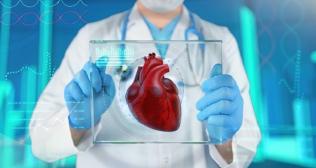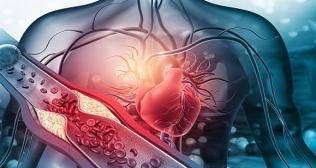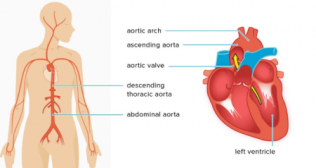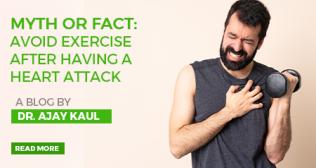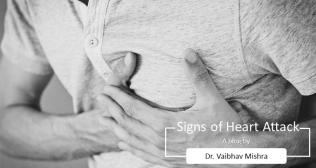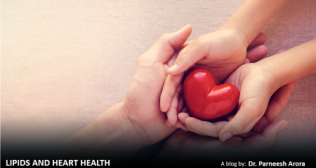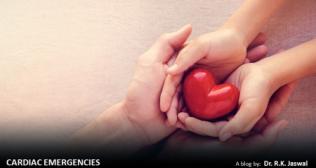
Exercise in Hot and Humid Weather - Dr. Peeyush Jain, Dr. Manoj Sharma, and Dr. Ashok Seth
In healthy state, hypothalamus maintains internal (core) temperature of human body at around 37o C by balancing heat production and heat loss from the body. Present at the base of the brain, the hypothalamus works like a thermostat.
The temperature regulating mechanism of body is primarily geared against overheating. This is particularly important during sustained exercise, when metabolic rate can increase to 20-25 times above the resting level. Since approximately 75 percent of oxygen uptake during exercise goes into heat production, exercise can increase the core body temperature by about 1o C every 5 minutes, unless the heat is dissipated. The risk of increase in core body temperature during exercise is further accentuated by hot and humid weather. A marked increase in core temperature is life threatening.
Mechanisms of Heat Loss from Body
Skin has a rich supply of free nerve endings that are sensitive to changes in skin temperature. These nerve endings constitute an early warning system that relays sensory information to the hypothalamus and other areas of the brain. The hypothalamus is also sensitive to the warmth of blood circulating through it. An increase in skin or blood temperature calls for an activation of heat dissipating mechanisms. These mechanisms are:
Heat Loss by Radiation
Because our bodies are usually warmer than the environment, heat is normally lost from the body into the environment by radiation of heat energy to the cooler objects.
Heat Loss by Conduction
A small amount of body heat is directly conducted to the skin, from where it is transferred to cooler air and solid objects in contact.
Heat Loss by Convection
Rapid air movement carries away the heat released into the air, thus making room for fresh air. The fresh air can absorb more heat. If the air movement is slow, the air next to the skin becomes warm. It acts like a zone of insulation, thus minimizing further heat loss by conduction.
Heat Loss by Evaporation
Sweating is the most important mechanism for increasing heat loss from the body. Evaporation of the sweat cools the skin. Cool skin cools the warm blood flowing through it. Cool blood in turn cools down the internal organs, picks up additional heat, and transfers it to the skin.
Heat Defense in Hot and Humid Environment
As the environmental temperature rises, the effectiveness of heat loss by radiation, conduction, and convection is reduced. When the ambient temperature exceeds 37o C, body may actually gain heat by these mechanisms. In such a situation, the only means for heat dissipation is evaporation of sweat.
Evaporation of sweat is greatly reduced when the humidity is high. In this situation, sweating is nothing more than a useless loss of water and electrolytes. Rather formation of copious sweat may lead to dehydration, which may further increase core body temperature.
Hot / Humid Weather and Healthy Circulatory System
Circulatory system plays a crucial role in dissipating heat from the body on exposure to environmental heat. Heart responds to a rise in environmental temperature by rapid pumping. It manifests by an increase in heart rate and an increase in cardiac output (the amount of blood pumped by heart in one minute). Simultaneously, blood vessels of the skin dilate, facilitating the flow of warm blood from internal organs to the body surface, observed as a flushed or red face on a hot day or during vigorous exercise.
In extreme weather, 15-25 percent of the cardiac output passes through the skin, favouring heat loss, especially from the hands, the forearms, the forehead, the ears, and the legs. An increase in skin blood flow, coupled with sweating establishes an effective defense against environmental heat in all, but extreme situations.
Moderate exercise may result in up to ten-fold increase in heat production. At environmental temperatures greater than 24o C, healthy young adults respond to exercise of this intensity by an increase in heart rate of 1 beat per minute for each oC rise in temperature. The corresponding increase in heart rate is 2-4 beats per minute per oC when humidity is also high.
Hot / Humid Weather and Heart Disease (Table 1)
Strenuous physical effort in hot and/or humid weather may be particularly deleterious in heart disease. Elevation of heart rate during exercise in heat increases oxygen demand of the heart muscle, which may not be possible to meet in coronary heart disease with fixed narrowing of one or more coronary arteries. This lowers the threshold for angina during exercise in hot weather.
Table 1
Heart Disease: Possible Consequences of Overexertion in Hot/Humid Weather
1.
Low threshold for angina pectoris
2.
Aggravation of heart failure
3.
Heart rhythm disorders (arrhythmias)
4.
Liver dysfunction
5.
Kidney dysfunction
6.
Heat injury
When pumping action of the heart is severely compromised, as in heart failure, blood flow through internal organs like liver and kidney becomes sluggish. This may impair the functioning of these organs. Diversion of blood flow to the skin during exercise in hot weather further reduces blood flow to these organs. This may be aggravated by sweating induced dehydration and decrease in blood volume.It may be somewhat attenuated by exercise in early morning hours when the ambient temperature is not too high.
Dehydration also prevents effective heat transfer from deeper tissues to the body surface and eventually decreases the rate of sweating. These may lead to a rise in core body temperature. Fluid loss equivalent to as little as 1 percent of body weight may cause a significant increase in core temperature. A rise in core temperature contributes to a larger increase in heart rate without corresponding increase in cardiac output. This leads to an increase in the perception of physical effort and may also precipitate angina. Excessive sweating may also alter blood and cellular electrolyte levels, causing heart rhythm disorders (arrhythmias) in susceptible people.
Deleterious effects of dehydration on the heart may be magnified several times over by concomitant use of diuretic drugs – drugs to increase urine formation – used in heart failure and hypertension.
Safety Rules for Exercise in Hot / Humid Weather
The most effective way to control heat stress injuries is to prevent their occurrence. Observing the following rules increases their safety margin:
Acclimatization
Relatively easy tasks in cool weather may become extremely taxing if attempted in hot weather. To exercise with same efficiency, some physiological adaptation is required. This is known as acclimatization. Acclimatization occurs after repeated exposure to new environmental conditions. In healthy people, major acclimatization to heat occurs by the end of first week of exposure. It is essentially complete by 10 days. Repeated heat exposure during exercise improves exercise capacity and heat tolerance by various mechanisms (table 2). Heat acclimatization may be significantly delayed in heart patients, especially when they are physically deconditioned.
In practical terms, the first few exercise sessions in hot weather should be light and brief. Thereafter exercise duration and intensity can be increased progressively. The acclimatization process is facilitated by proper hydration. Therefore, adequate amount of water should be ingested before, during, and after exercise.
Heat acclimatization, although quickly gained, may also be lost quickly. Heat-acclimatized individuals who have no heat exposure for 2-3 weeks need to be reacclimatized. A major increase in environmental temperature in the course of summer season may also require additional acclimatization.
Place and Time
Exercise in hot weather is best undertaken in shade. Exposure to direct sunlight should be avoided. For out-door activity, early morning or late evening is better than the mid-day. During in-door exercises, good air movement with fan or air conditioning prevents heat injury and increases exercise capacity.
Table 2
Major Physiological Adjustments During Heat Acclimatization
Acclimatization Response
Effect
Improved skin blood flow
Transports metabolic heat from deep tissues to body surface.
Effective distribution of cardiac output
- Appropriate circulation to skin and muscles to meet demands of metabolism and temper-ature regulation.
- Greater stability in blood pressure during exercise.
Lower threshold for sweating
Evaporative cooling begins early in exercise.
Increased sweat output (After 10 days of expo-sure, the capacity for sweating is nearly doubled)
Maximizes evaporative cooling.
Lowered salt concentration of sweat
Dilute sweat preserves salt in extracellular fluid.
Clothing
Minimal amounts of porous, light-coloured, loose fitting clothing are the best in hot and humid weather. Such clothing permits free circulation of air between the skin and the environment and promotes water movement away from the skin. Overdressing prevents dissipation of body heat and sweat. Light colours reflect away the heat while dark colours absorb it. Cotton clothing is the best because it absorbs the moisture readily. Heavy sweat shirts and clothing made of rubber or plastic produce high humidity close to the skin and retard the vaporization of sweat.
It is not a good practice to wipe the sweat during exercise. Evaporative cooling is thwarted by continually drying the skin before sweat has a chance to evaporate. Sweat per se does not cool the skin. It is evaporation of the sweat that cools the skin. For the same reason, the practice of switching to dry clothing in between exercise makes little sense. Dry clothing, no matter how light, retards heat exchange compared to the same clothing when it is soaking wet.
Hydration
Sweat losses during strenuous exercise in the heat may reach as much as 1.5 litres per hour. This may be increased to 3 litres per hour after acclimatization. Fluid losses of these magnitudes may cause dehydration. Fluid loss is further accentuated in humid environment.
A golden rule to prevent the problems associated with dehydration during exercise is that water should be ingested before, during, and after exercise. Thirst is not a reliable indicator of dehydration because a person can lose as much as 2 percent of body water before feeling thirsty. Therefore, one should not wait to become thirsty before reaching for water. Water should be taken every 15-20 minutes during exercise.
Pure cool water is sufficient in most cases. When a person is prone to sodium loss, about 1/3 of a teaspoon of table salt may be added to a litre of water. Potassium loss in sweat may be replaced by potassium rich foods like citrus fruit and bananas. Glucose content of the drink should be low (< 6-8 gms. per 100 ml.), if at all.
Pace of Exercise
Over-exertion in hot and humid weather increases the risk of heat injury. Acclimatized people are also not immune from it. Therefore, exercise intensity should not cross a moderate level when the environmental temperature exceeds 80o F (27o C) and/or relative humidity is more than 75 percent. It is also a good policy to alternate periods of moderate activity with periods of leisurely activity. However, complete rest between activities is undesirable.
Despite these precautions, should there be any signs of heat injury, it is advisable to stop exercise – but gradually. Lack of an adequate cool-down while experiencing the early symptoms of heat injury increases the risk. More severe symptoms warrant that exercise should be stopped and one should immediately reach indoors or shade. Cooling the head is also helpful (Table 3).
Avoid Sauna, Steam-bath, and Hot-tub after Exercise
Table 3
Heat Injury
Factors Increasing the Risk of Heat Injury During Exercise
1.
Old age
2.
Physical deconditioning
3.
Lack of heat acclimatization
4.
Overexertion (e.g. young, overactive men)
5.
Obesity
6.
Dehydration
7.
Salt depletion
8.
Coronary heart disease
9.
Chronic congestive heart failure
10.
Chronic lung disease
11.
Medications that interfere with sweating, e.g. tricyclic antidepressants, antihistamines
12.
Medications that impair temperature regulation, e.g. phenothiazines
13.
Lack of sleep
14.
Infection
15.
Fever
Disorders Associated with High Environmental Temperature
Condition
Symptoms
Treatment
Heat Cramps
Brief, intermittent, excruciating, muscle cramps involving an extremity following vigorous exercise
- Rest in a cool environ-ment.
- Replace water, sodium, and potassium – lemon squash is a good choice.
Heat Exhaustion
Weakness, anxiety, thirst, giddi-ness, headache, loss of appetite, nausea, vomiting, and faintness. Fever, agitation, impaired judg-ment, and confusion may also be present.
- Rest in a cool environ-ment.
- Replace water, sodium, and potassium.
Heat Stroke
Marked fever, often exceeding 106OF, sudden onset of headache, slurred speech, giddiness, faintness, hallucinations, fits, confusion, delirium, or loss of con-sciousness.
- May lead to multiple organ failure, unless treated as a medical emergency.
- If any delay is antic-ipated in reaching the hospital, remove all clothing, give an ice water bath under a fan, and massage the skin.
Categories
Clear allMeet the doctor
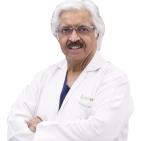
- Cardiac Sciences | Interventional Cardiology
-
40 Years Experience
-
5000 Fees







